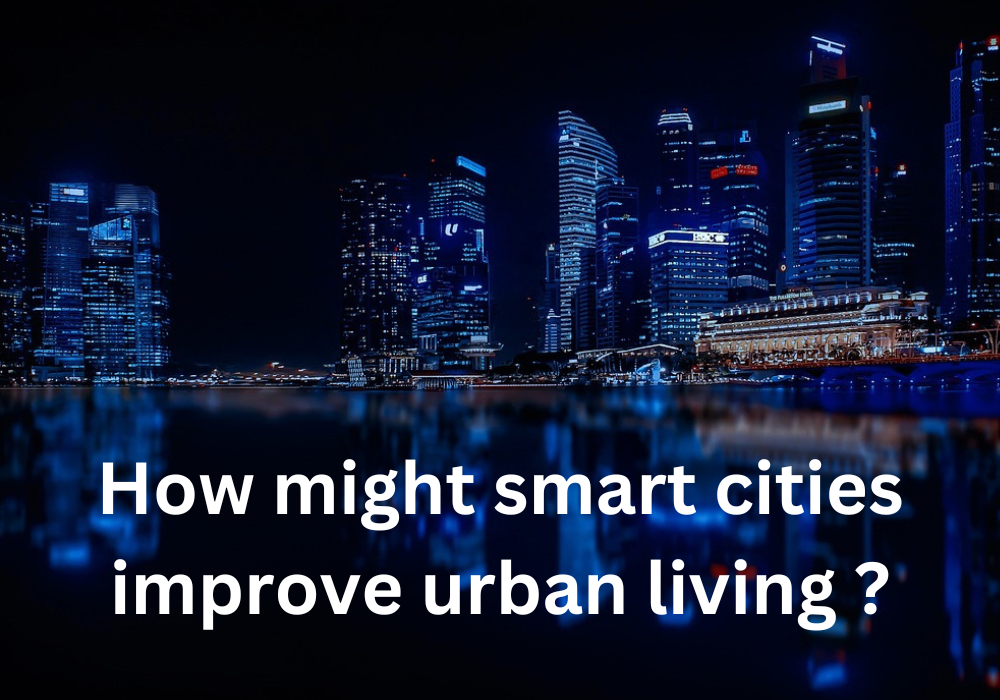Cities and individuals that rely on technology are becoming more interdependent on one another globally. Our routine tasks are evolving due to a new generation of intelligent apps. You could find smart home security apps, a clever fridge, or personal assistants like Alexa from Amazon in your house. A smart city is an urban region that collects data via various electrical Internet of Things (IoT) sensors. Insights obtained from such data are then used to enhance operations citywide by effectively managing resources, assets, & services.
Enhancing Urban Living Standards
Increasing the safety of the public
There is a possibility that murder, fire, & traffic deaths may be reduced by eight to ten percent if various applications were used to their total capacity. Additionally, there is a potential for a 30 to 40 percent decrease in occurrences of assault, burglary, vehicle theft, and robbery. Undoubtedly, these measurements provide city inhabitants the freedom of movement and peace of mind they deserve. In the fight against crime, authorities may better use a limited workforce and resources by analyzing collected data.
Home safety systems, intelligent surveillance, and gunshot detection are examples of how predictive policing may help law enforcement respond more quickly to situations. It is crucial to use data-driven police strategies while safeguarding civil rights to prevent the criminalization of certain areas or demographic groups.
improved public health
In the industrialized world, the most impactful applications might be those that aid in monitoring, preventing, and treating chronic illnesses such as diabetes or cardiovascular disease. Healthcare costs in wealthy cities may be cut by nearly four percent with remote patient monitoring devices. These technologies collect vital signs digitally and send them to physicians far away for evaluation. The patient and the doctor may use this information to determine whether prompt action is required, decreasing the likelihood of problems and hospitalizations.
Additionally, cities may use analytics and data collection to pinpoint populations with heightened risk profiles, allowing for more targeted interventions. Important health messages on cleanliness, safe sexual practices, immunizations, and antiretroviral medication adherence may be sent via mHealth treatments, potentially saving lives. More than a 5% reduction in disability-adjusted life years (DALYs) might be achieved in low-income communities with high infant mortality rates via data-based interventions centered on the health of mothers and children. Developing cities may save five percent of costs by using infectious disease monitoring systems to proactively manage rapidly spreading outbreaks.
Settings that are more sustainable and clean
The environmental pressures will increase as the world becomes more urbanized, industrialized, and consumed. A ten to fifteen percent reduction in emissions is possible using applications such as mobility apps, dynamic power pricing, and building automation systems. Sophisticated metering and computerized feedback systems are used in water-consumption monitoring. In cities with high household water usage, it may motivate individuals to conserve and decrease consumption by fifteen percent.
Pipe leakage is the leading cause of water waste in underdeveloped countries. Those losses may be reduced by up to twenty-five percent with analytics and sensors. Ten to twenty percent less solid waste per capita may be achieved using applications like pay-as-you-throw digital monitoring.
Daily, communities can save twenty-five to Eighty liters of water and decrease unrecycled garbage by Thirty to 130 kg per person. Concerning air quality, air-quality monitors can pinpoint pollutant sources and provide the groundwork for further measures.
The Future Is in Smart Cities
Their relationship will deepen as metropolitan centers and cutting-edge technologies continue to grow. Improved city infrastructure is possible due to better decision-making by big data and cutting-edge technologies. Naturally, the economy might benefit much from better decision-making.
Smart cities are in high demand because they may improve our quality of life while enhancing public service systems and reducing expenses. We can find better alternatives and save more resources if we improve our interactions with the environment and cities.

